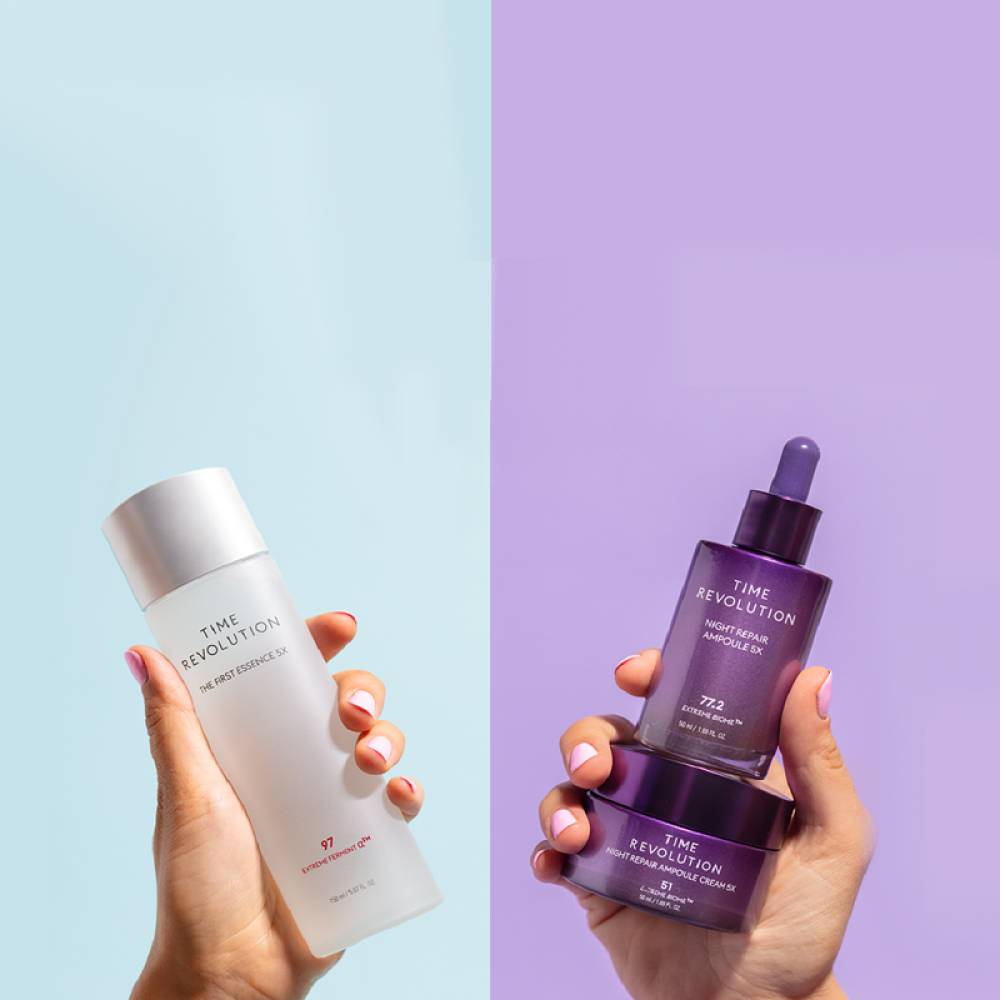Sunscreen is an essential component of our daily skincare routine, especially when it comes to protecting our skin from harmful ultraviolet (UV) radiation. One of the most popular choices for sun protection is SPF 50 sunscreen. In this article, we will delve into the science behind SPF 50, decoding its duration of effectiveness, and clearing up some common misconceptions. We will also provide tips on choosing the right SPF 50 sunscreen and how to apply it correctly for maximum effectiveness.
The Science Behind SPF 50
Before we dive into the specifics of SPF 50, let's first understand the role of sunscreen in protecting our skin. Sunscreens work by creating a barrier on the skin's surface that absorbs or reflects the sun's UV rays. This barrier helps prevent the UV rays from penetrating the skin, reducing the risk of sunburn, premature aging, and skin cancer.
Now, let's focus on SPF (Sun Protection Factor), which is a measure of a sunscreen's ability to protect the skin from UVB rays, the primary cause of sunburn. SPF 50 indicates that the sunscreen is capable of blocking approximately 98% of UVB rays. The higher the SPF, the greater the sun protection offered by the sunscreen.
The Role of Sunscreen in Skin Protection
Sunscreen is a crucial tool in safeguarding our skin from the harmful effects of the sun's UV rays. By applying sunscreen daily, we can reduce the risk of sunburn, photoaging, and skin cancer.
How SPF 50 Works Against UV Rays
SPF 50 sunscreen provides enhanced protection against UVB rays when compared to lower SPF options. It filters out nearly 98% of the UVB rays, offering a higher level of sunburn protection. However, it's important to note that SPF 50 does not necessarily offer twice the protection of SPF 25. The increase in sunburn protection between different SPF levels becomes marginal beyond SPF 30.
It's worth mentioning that SPF only measures a sunscreen's ability to block UVB rays, not UVA rays. UVA rays are also harmful and can contribute to skin aging and skin cancer. To ensure comprehensive protection, look for a broad-spectrum sunscreen that shields against both UVA and UVB rays.
Additionally, the effectiveness of sunscreen depends on proper application. Most people apply far less sunscreen than the amount used in SPF testing, which can significantly reduce the level of protection. To achieve the stated SPF on the product, it's recommended to apply a generous amount (about a shot glass full) and reapply every two hours, especially after swimming or sweating.
Decoding SPF 50 Duration
While SPF 50 sunscreen provides effective protection against UVB rays, it is essential to understand that sunscreen does not last indefinitely. The duration of its effectiveness depends on various factors that we will discuss in detail.
But before we dive into the nitty-gritty details, let's take a moment to appreciate the science behind sunscreen. Sunscreen works by forming a protective barrier on the skin that absorbs or reflects the harmful ultraviolet (UV) rays from the sun. It's like having a tiny army of sun warriors guarding your skin against the invisible enemy.
Factors Influencing Sunscreen Effectiveness
Several factors can impact the duration of sunscreen effectiveness:
- The intensity of sun exposure: Sunscreen effectiveness diminishes with prolonged exposure to the sun, particularly during peak hours when the sun's rays are the strongest. So, if you're planning a day at the beach or a hike in the mountains, make sure to take extra precautions and reapply sunscreen more frequently.
- Sweating and water exposure: Water and sweat can reduce the effectiveness of sunscreen, so it's crucial to reapply after swimming or intense physical activity. Imagine your sunscreen as a brave knight fighting against the forces of nature. It may withstand a few drops of sweat, but a full-on battle with water will leave it weakened and vulnerable.
- Sunscreen formulation: Different sunscreen formulations have varying degrees of durability. Some sunscreens offer water-resistant or sweat-proof protection, which can enhance their effectiveness. Think of it as upgrading your sunscreen to a superhero version that can withstand even the toughest challenges.
Now that we've covered the factors that can influence sunscreen effectiveness, let's move on to the burning question: when should you reapply SPF 50 sunscreen?
When to Reapply SPF 50 Sunscreen
To ensure adequate protection, it is recommended to reapply SPF 50 sunscreen every two hours, or more frequently if you have been sweating or swimming. Remember, sunscreen should be reapplied even on cloudy or overcast days, as UV rays can still penetrate through the clouds. Mother Nature may try to deceive you with her cloudy disguise, but the sun's rays can still sneak through and cause damage to your skin.
It's worth noting that sunscreen should be applied generously and evenly to all exposed areas of the skin for optimal protection. Don't forget commonly overlooked areas like the ears, back of the neck, and tops of the feet. Your skin deserves the royal treatment, so be sure to give it the attention it needs.
Myths and Misconceptions About SPF 50
As with any popular topic, SPF 50 sunscreen has its fair share of myths and misconceptions. Let's debunk some of the most common misunderstandings:
Debunking Common SPF Misunderstandings
Myth #1: Higher SPF offers significantly better protection. While SPF 50 offers excellent sunburn protection, higher SPF levels provide only marginally increased benefits and may lead to a false sense of security. The most important factor is proper application and timely reapplication.
Myth #2: SPF 50 sunscreen blocks all UV rays. No sunscreen can provide 100% protection. SPF 50 sunscreen blocks around 98% of UVB rays but is also effective against UVA rays to some extent. However, proper sun protection also includes seeking shade, wearing protective clothing, and using sunglasses.
The Truth About SPF 50 and Sun Exposure
It is essential to understand that SPF 50 sunscreen does not grant permission to prolong sun exposure. While it provides excellent sunburn protection, it does not block all UV rays or protect against the long-term damage caused by UVA rays. Limiting sun exposure and taking additional measures, such as wearing hats and seeking shade, are crucial for maintaining healthy skin.
Another common misconception about SPF 50 sunscreen is that it is waterproof. While some sunscreens claim to be water-resistant, no sunscreen is entirely waterproof. Water-resistant sunscreens maintain their SPF after a certain amount of time in water, typically 40 to 80 minutes, depending on the product. Reapplication after swimming or sweating is crucial to ensure continued protection.
Furthermore, there is a belief that individuals with darker skin tones do not need to use SPF 50 sunscreen. This is false. While higher levels of melanin provide some natural protection against UV rays, everyone, regardless of skin color, is at risk of sun damage and skin cancer. Using SPF 50 sunscreen is essential for all skin types to maintain healthy skin and prevent premature aging.
Choosing the Right SPF 50 Sunscreen
When it comes to selecting the perfect SPF 50 sunscreen to protect your skin from the sun's harmful rays, there are several factors to take into consideration beyond just the SPF number. Your skin type and lifestyle play a crucial role in determining which sunscreen will work best for you. Additionally, understanding the different components of sunscreen products can help you make an informed decision that suits your needs.
One important aspect to consider is the texture of the sunscreen. Some SPF 50 sunscreens come in lightweight, non-greasy formulations that are ideal for everyday wear, while others offer more hydrating properties that are beneficial for individuals with dry skin. By assessing your skin type and personal preferences, you can choose a sunscreen that not only provides adequate sun protection but also feels comfortable on your skin.
Considerations for Different Skin Types
Not all sunscreens are created equal, especially when it comes to catering to different skin types. If you have oily or acne-prone skin, opt for SPF 50 sunscreens that are oil-free or non-comedogenic to prevent pore congestion and breakouts. Conversely, individuals with dry or sensitive skin may find solace in sunscreens that contain moisturizing ingredients like hyaluronic acid or glycerin to help nourish and soothe the skin.
Moreover, considering your lifestyle is essential when choosing an SPF 50 sunscreen. If you enjoy outdoor activities or sports that involve sweating, selecting a water-resistant formula can ensure long-lasting protection even during physical exertion. Additionally, individuals who spend extended periods in the sun should opt for a broad-spectrum sunscreen that shields against both UVA and UVB rays to prevent sunburn and premature skin aging.
Evaluating Sunscreen Ingredients
Delving into the realm of sunscreen ingredients can be overwhelming, but understanding the key components can aid in making an educated choice. When browsing for an SPF 50 sunscreen, prioritize products that contain mineral-based ingredients such as zinc oxide and titanium dioxide. These physical blockers create a protective barrier on the skin's surface, reflecting and scattering UV radiation to prevent sun damage without causing skin irritation.
Furthermore, avoiding harsh chemicals like oxybenzone and octinoxate commonly found in chemical sunscreens can benefit both your skin and the environment. Opting for reef-safe sunscreens that are free of harmful additives not only protects your skin but also contributes to the preservation of marine ecosystems.
Proper Application of SPF 50 Sunscreen
Applying sunscreen correctly is crucial to ensure its effectiveness. Here are some tips to maximize the protection provided by SPF 50 sunscreen:
Tips for Maximizing Sunscreen Effectiveness
- Apply sunscreen generously: The recommended amount is about one ounce (or a shot glass full) for full-body coverage, and at least a quarter teaspoon for just the face.
- Apply sunscreen before sun exposure: Apply sunscreen at least 15 minutes before heading outside to allow it to fully absorb into the skin.
- Reapply regularly: Remember to reapply SPF 50 sunscreen every two hours or more frequently if you have been sweating or swimming.
- Be thorough: Don't forget to apply sunscreen to often neglected areas, such as the back of the neck, ears, and tops of the feet.
- Use other sun protection measures: Don't solely rely on sunscreen. Seek shade, wear protective clothing, and use sunglasses to further shield your skin from the sun's harmful rays.
Common Mistakes in Sunscreen Application
Avoid these common mistakes that can compromise the effectiveness of SPF 50 sunscreen:
- Not applying enough sunscreen: Insufficient application can significantly reduce the level of protection.
- Missing or skipping areas: Ensure all exposed areas receive sunscreen application, including commonly overlooked spots like the ears and feet.
- Forgetting to reapply: Remember to reapply SPF 50 sunscreen every two hours, or more frequently if needed.
- Using expired sunscreen: Check the expiration date and replace sunscreen that has expired, as its effectiveness may be compromised.
Conclusion
In conclusion, understanding the duration and effectiveness of SPF 50 sunscreen is crucial for proper sun protection. While SPF 50 provides excellent sunburn protection, it requires proper application and reapplication to ensure its effectiveness. Remember to consider your skin type and lifestyle when choosing a sunscreen, and follow the recommended guidelines for application. By incorporating SPF 50 sunscreen into your daily routine and practicing sun-safe habits, you can enjoy the outdoors while safeguarding your skin from the harmful effects of the sun.








